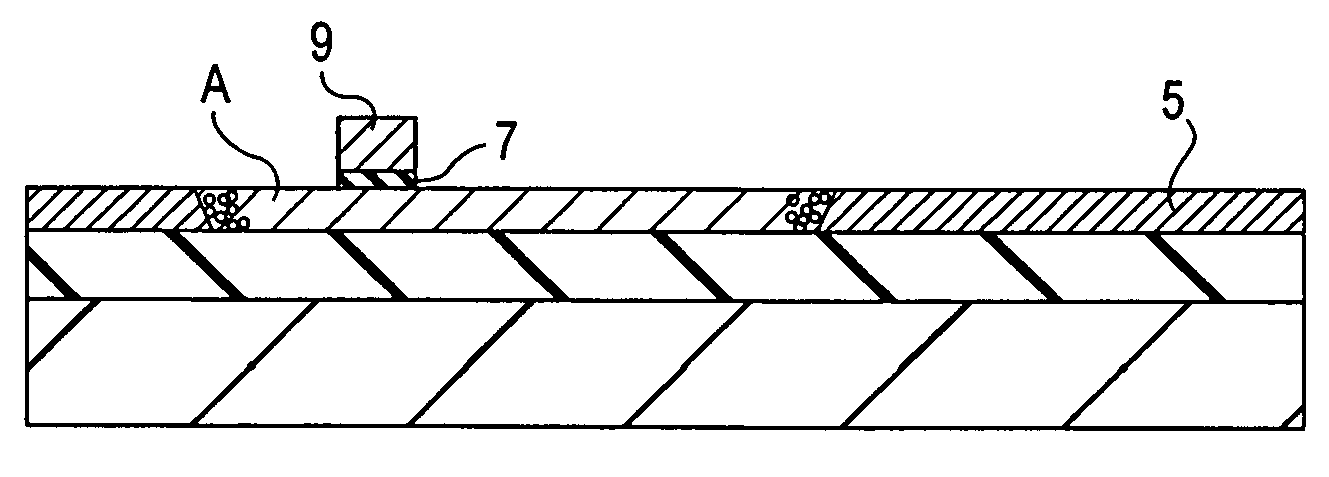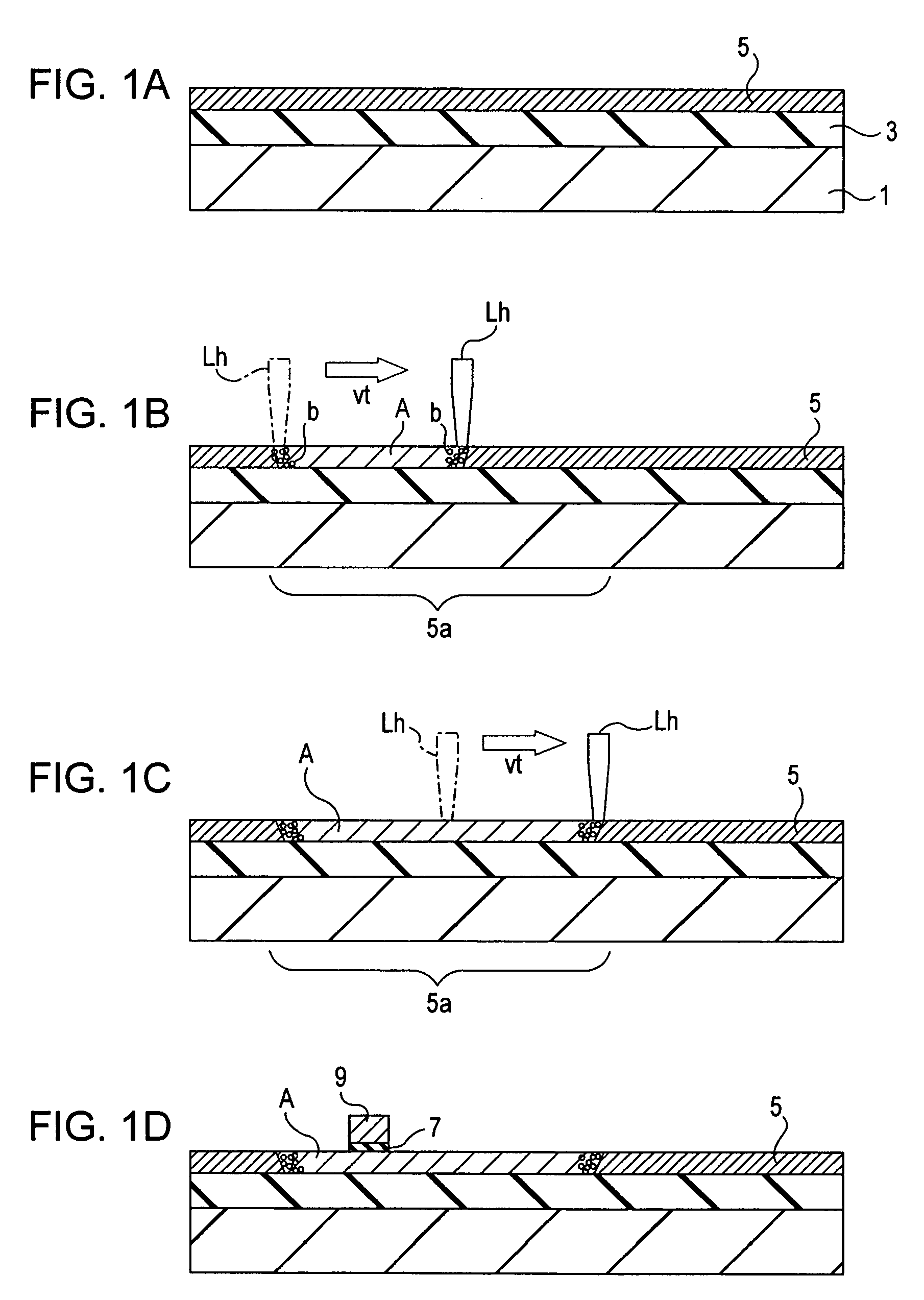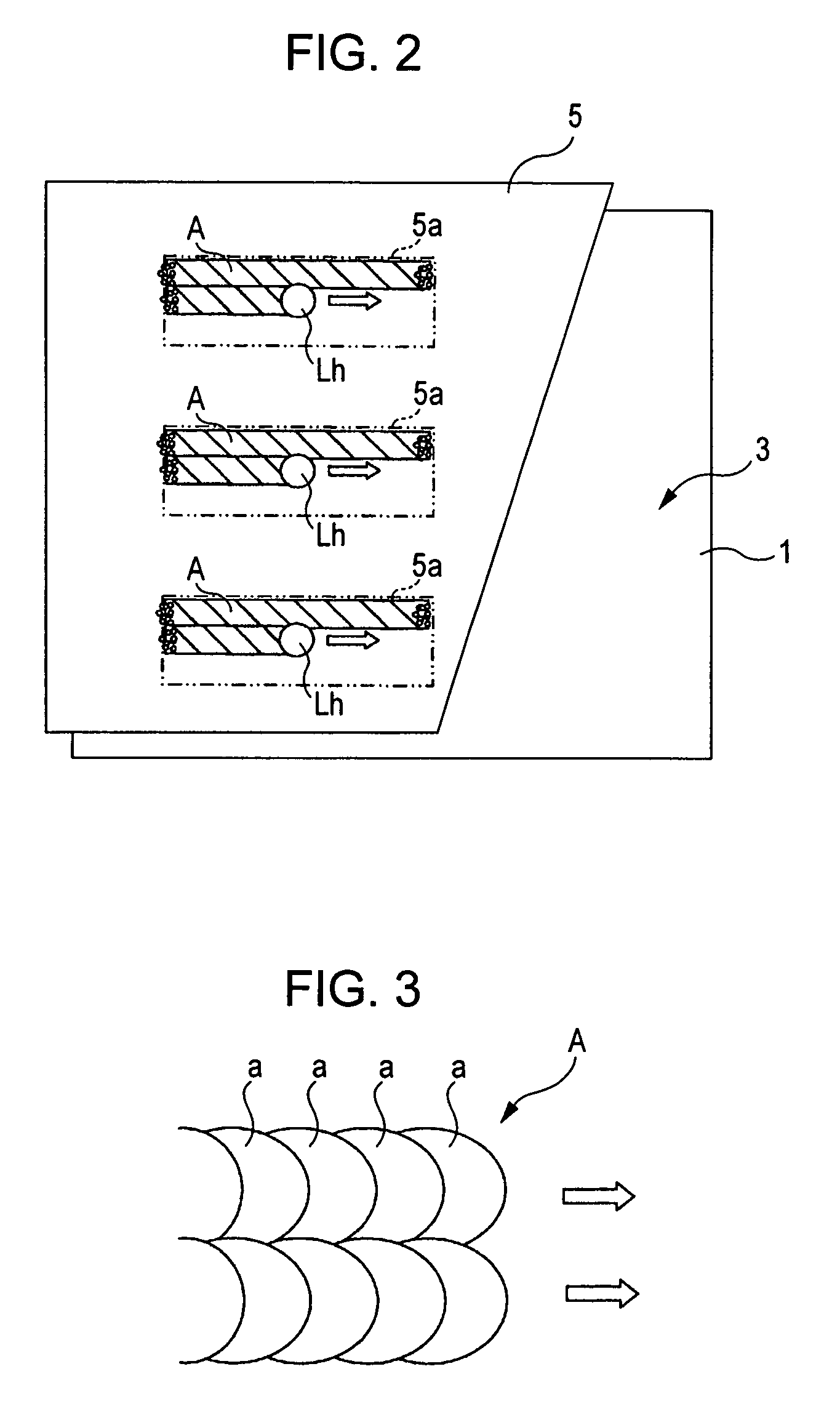Method for making thin-film semiconductor device
a semiconductor device and thin film technology, applied in the direction of solid-state devices, laser beam welding apparatus, manufacturing tools, etc., can solve the problems of difficult to transfer glass substrates and increase equipment scale, process that can use plastic substrates is not easily achievable, and the desired productivity is not achieved. , to achieve the effect of preventing heat generation, reducing process steps, and reducing process temperatur
- Summary
- Abstract
- Description
- Claims
- Application Information
AI Technical Summary
Benefits of technology
Problems solved by technology
Method used
Image
Examples
first embodiment
[0026]FIGS. 1A to 1D are cross-sectional views of process steps of a method for making a thin-film semiconductor device according to a first embodiment. The method of the first embodiment will be described with reference to FIGS. 1A to 1D.
[0027] Referring first to FIG. 1A, a substrate 1 for forming a thin-film semiconductor device is prepared. The substrate 1 may be composed of glass, quartz, sapphire, plastic, or a metal, such as aluminum or stainless steel. An insulating buffer layer 3 for insulation is formed on a main face of the substrate 1 to prevent heat from conducting to the substrate 1. The detailed description of the substrate 1 and the buffer layer 3 are provided below.
[0028] An amorphous semiconductor thin film 5 made of amorphous silicon is then formed on the buffer layer 3 by a deposition process at a low deposition temperature. For example, plasma-enhanced chemical vapor deposition (PE-CVD) at a deposition temperature lower than 250° C., i.e., the heat resistant te...
second embodiment
[0074]FIGS. 6A to 6D are cross-sectional views of process steps of a method for making a thin-film semiconductor device according to a second embodiment. The method of the second embodiment will be described with reference to FIGS. 6A to 6D.
[0075] Referring first to FIG. 6A, a buffer layer 3 is formed on a substrate 1 in the same manner as the first embodiment described with reference to FIG. 1A. A semiconductor thin-film pattern 5a is formed on the buffer layer 3. The semiconductor thin-film pattern 5a has the same shape as the selected region 5a in the first embodiment. The semiconductor thin-film pattern 5a preferably has a shape including the selected region 5a described in the first embodiment and thus may be larger than the selected region 5a.
[0076] The semiconductor thin-film pattern 5a may be formed by a method in which the deposition temperature is low. As in the first embodiment, the semiconductor thin-film pattern 5a may be formed by pattern-etching a semiconductor thin...
PUM
| Property | Measurement | Unit |
|---|---|---|
| Diameter | aaaaa | aaaaa |
| Wavelength | aaaaa | aaaaa |
| Wavelength | aaaaa | aaaaa |
Abstract
Description
Claims
Application Information
 Login to View More
Login to View More - R&D
- Intellectual Property
- Life Sciences
- Materials
- Tech Scout
- Unparalleled Data Quality
- Higher Quality Content
- 60% Fewer Hallucinations
Browse by: Latest US Patents, China's latest patents, Technical Efficacy Thesaurus, Application Domain, Technology Topic, Popular Technical Reports.
© 2025 PatSnap. All rights reserved.Legal|Privacy policy|Modern Slavery Act Transparency Statement|Sitemap|About US| Contact US: help@patsnap.com



